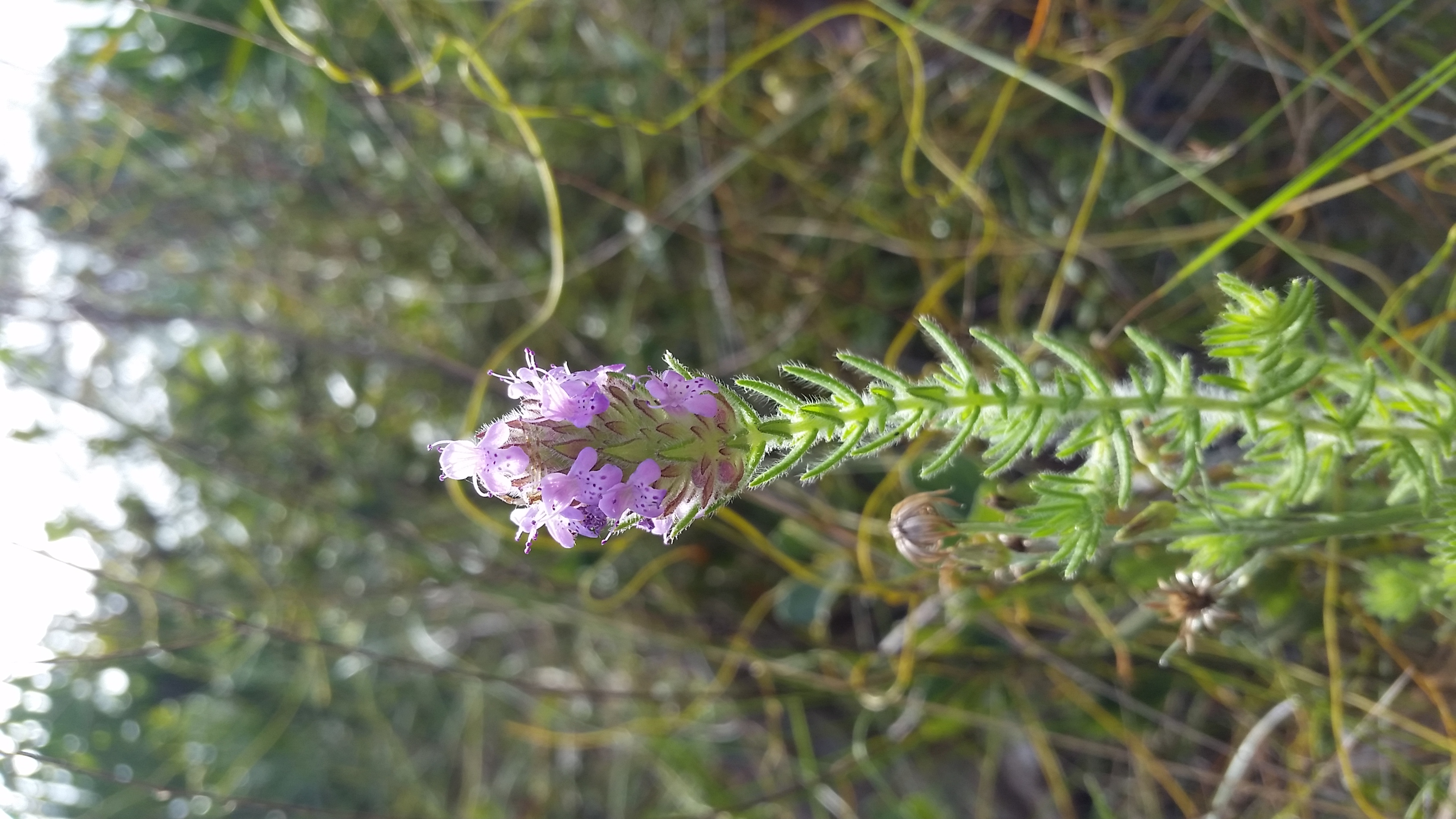Difference between revisions of "Piloblephis rigida"
KatieMccoy (talk | contribs) (→Taxonomic notes) |
KatieMccoy (talk | contribs) (→Cultivation and restoration) |
||
| Line 53: | Line 53: | ||
==Conservation and Management== | ==Conservation and Management== | ||
==Cultivation and restoration== | ==Cultivation and restoration== | ||
| − | The | + | The Miccosukee and Seminole Indians made tea and flavored soups and used it to repel insects <ref name="eat"/>. |
==Photo Gallery== | ==Photo Gallery== | ||
Revision as of 16:36, 19 February 2016
| Piloblephis rigida | |
|---|---|

| |
| Photo taken by Michelle Smith at Jonathan Dickinson State Park | |
| Scientific classification | |
| Kingdom: | Plantae |
| Division: | Magnoliophyta - Flowering plants |
| Class: | Magnoliopsida – Dicotyledons |
| Order: | Lamiales |
| Family: | Lamiaceae ⁄ Labiatae |
| Genus: | Piloblephis |
| Species: | P. rigida |
| Binomial name | |
| Piloblephis rigida (W. Bartram ex Benth.) Raf. | |

| |
| Natural range of Piloblephis rigida from USDA NRCS Plants Database. | |
Common name: wild pennyroyal
Contents
Taxonomic notes
This is the only species in the genus Piloblephis[1]. In Greek, Pilo is hairy and belphis is eyelid, this refers to the hairs on the flower. The name rigida refers to the stiff branches[2].
Description
This is a short lived perennial species with thin woody stems and needle-like leaves that give off a pennyroyal smell when crushed[3]. The 2-lipped flowers are purple with dark purple spots on the lower tips, arranged in dense, showy clusters[1].
Distribution
It is found in peninsular Florida, some counties in Georgia, and a few western Bahamas islands[2].
Ecology
Habitat
It can be found in well drained sunny locations, that include pine flatwoods, sandhills, and xeric oak/saw palmetto scrubs[3](FSU Herbarium). Associated species include oaks and saw palmetto.
Phenology
Seen flowering late December 2015 at Jonathan Dickinson State Park on the Kitching Creek Trail by Michelle Smith; very abundant.
Seed dispersal
Seed bank and germination
Fire ecology
Pollination
The following Hymenoptera families and species were observed visiting flowers of Piloblephis rigida at Archbold Biological Station (Deyrup 2015):
Halictidae: Agapostemon splendens, Augochlorella aurata, Lasioglossum miniatulus, L. nymphalis
Megachilidae: Megachile brevis pseudobrevis
Sphecidae: Oxybelus laetus fulvipes
Use by animals
Diseases and parasites
Conservation and Management
Cultivation and restoration
The Miccosukee and Seminole Indians made tea and flavored soups and used it to repel insects [2].
Photo Gallery
References and notes
Deyrup, M.A. and N.D. 2015. Database of observations of Hymenoptera visitations to flowers of plants on Archbold Biological Station, Florida, USA.
Florida State University Robert K. Godfrey Herbarium database. URL: http://herbarium.bio.fsu.edu. Last accessed: October 2015. Collectors: Cecil R. Slaughter. States and Counties: Florida: Osceola. Compiled by Tall Timbers Research Station and Land Conservancy.